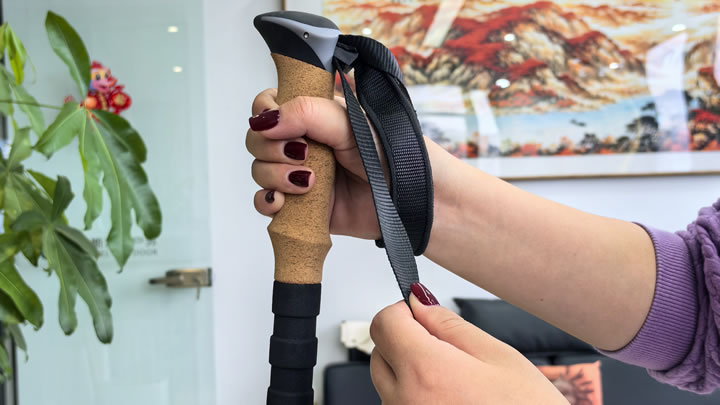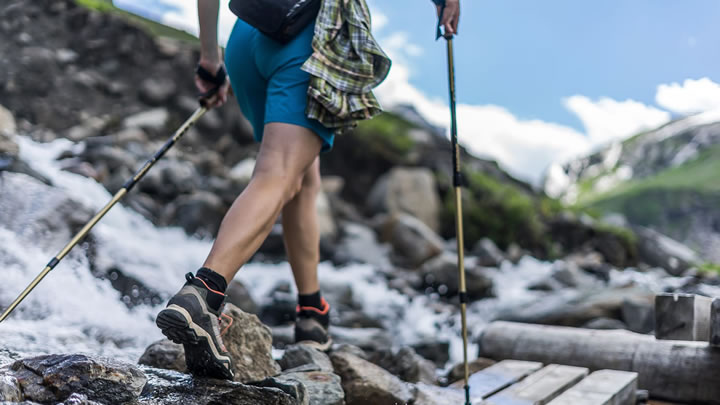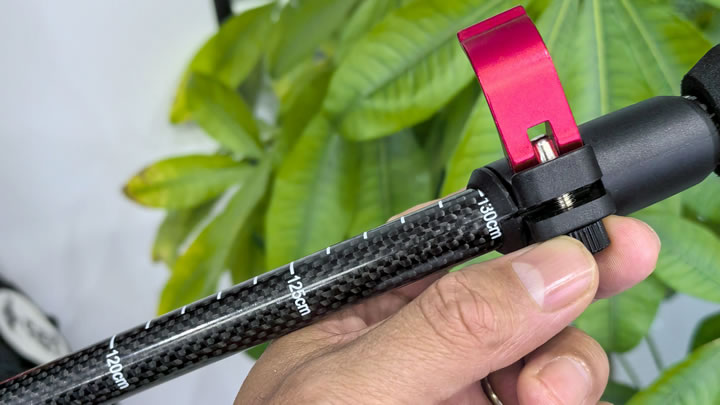Difference Between Walking Poles and Trekking Poles: Choosing the Right Support for Your Adventure
While the terms "walking poles" and "trekking poles" are often used interchangeably, subtle yet significant differences exist between them. Understanding these distinctions is crucial for selecting the right gear that matches your specific activity, whether it's a gentle daily walk or a multi-day mountain expedition. This guide will break down the key differences in design, function, and ideal usage to help you make an informed decision.

Design and Construction: Where Form Meets Function
The divergence begins with the physical construction of these poles:
- Walking Poles: Typically designed with simplicity and comfort in mind. They often feature:Fixed or Simply Adjustable Length: Many models have limited adjustability or are single-section designs.Comfort-First Grips: Ergonomically shaped handles, often made of soft foam or cork, prioritize hand comfort over technical performance.Basic Tips: Usually come with standard rubber feet optimized for pavement and well-maintained paths.Lighter Duty Construction: May use standard aluminum alloys and have less robust locking mechanisms.
- Trekking Poles: Engineered for performance and durability in challenging conditions. Key features include:Precise Adjustability: Most are multi-section telescopic poles with reliable, secure locking systems (like flick-locks) for fine-tuning length on varied terrain.Technical Grips: Designed for various hand positions, often with extended foam sections and highly efficient, non-stretch wrist straps for better power transfer.Advanced Tip Systems: Equipped with aggressive carbide tips for traction on rock, ice, and dirt, along with removable rubber "baskets" to prevent sinking in soft ground.Rugged Materials: Frequently constructed from high-grade 7075 aluminum or carbon fiber for an optimal balance of strength and weight.
Function and Performance: How They Behave on the Trail
The design differences translate directly into how these poles perform:
- Primary Function of Walking Poles: The main goal is stability and balance. They are excellent for:Redistributing weight and reducing impact on joints during everyday walks.Providing confidence on uneven urban terrain or gentle, well-groomed trails.Offering light support for those with minor mobility concerns.
- Primary Function of Trekking Poles: These are tools for propulsion, endurance, and safety. They are built to:Engage the upper body to propel the hiker forward, increasing hiking efficiency and speed.Provide critical stability and balance on technical, uneven, or slippery terrain like river crossings, scree slopes, and steep descents.Reduce fatigue and impact on knees and joints over long distances, especially when carrying a heavy backpack.
Ideal Usage Scenarios: Matching the Pole to the Activity
Your choice should be guided by where and how you plan to use them:
Choose Walking Poles For:
- Daily fitness walks in parks or on paved surfaces.
- Light day hiking on flat or gently rolling, well-maintained trails.
- Seniors or individuals seeking balance assistance during walks.
- Travelers who need compact, simple support for sightseeing.
Choose Trekking Poles For:
- Day hiking on rocky, steep, or unpredictable mountain terrain.
- Multi-day backpacking trips with a heavy load.
- Thru-hiking and long-distance trails where endurance is key.
- Winter hiking or mountaineering where stability is critical for safety.
The Grey Area: Overlap and Hybrid Models
It's important to note that the market offers a spectrum of products. Many "walking poles" now incorporate features from trekking poles, such as adjustable lengths and basic locking mechanisms. Conversely, some technical trekking poles are perfectly suitable for less demanding use. The best way to categorize a pole is to look at the sum of its features and the manufacturer's intended use.
Summary: Your Quick Guide
| Feature | Walking Poles | Trekking Poles |
|---|---|---|
| Primary Use | Stability & Balance | Propulsion & Endurance |
| Terrain | Pavement, Groomed Trails | Rough, Uneven, Mountainous |
| Adjustability | Limited or Fixed | Highly Adjustable |
| Grip Design | Comfort-Focused | Performance-Oriented |
| Tips | Rubber Feet | Carbide Tips with Baskets |
| Load | Body Weight | Body Weight + Heavy Backpack |
Conclusion
In essence, all trekking poles can function as walking poles, but not all walking poles are capable enough to be true trekking poles. If your activities are confined to gentle, everyday walks, a comfortable pair of walking poles will serve you perfectly. However, if you venture onto challenging trails, carry significant weight, or demand performance and durability from your gear, investing in a quality pair of trekking poles is a decision your knees—and your entire body—will thank you for. Assess your typical activities, and let your needs guide your choice.






